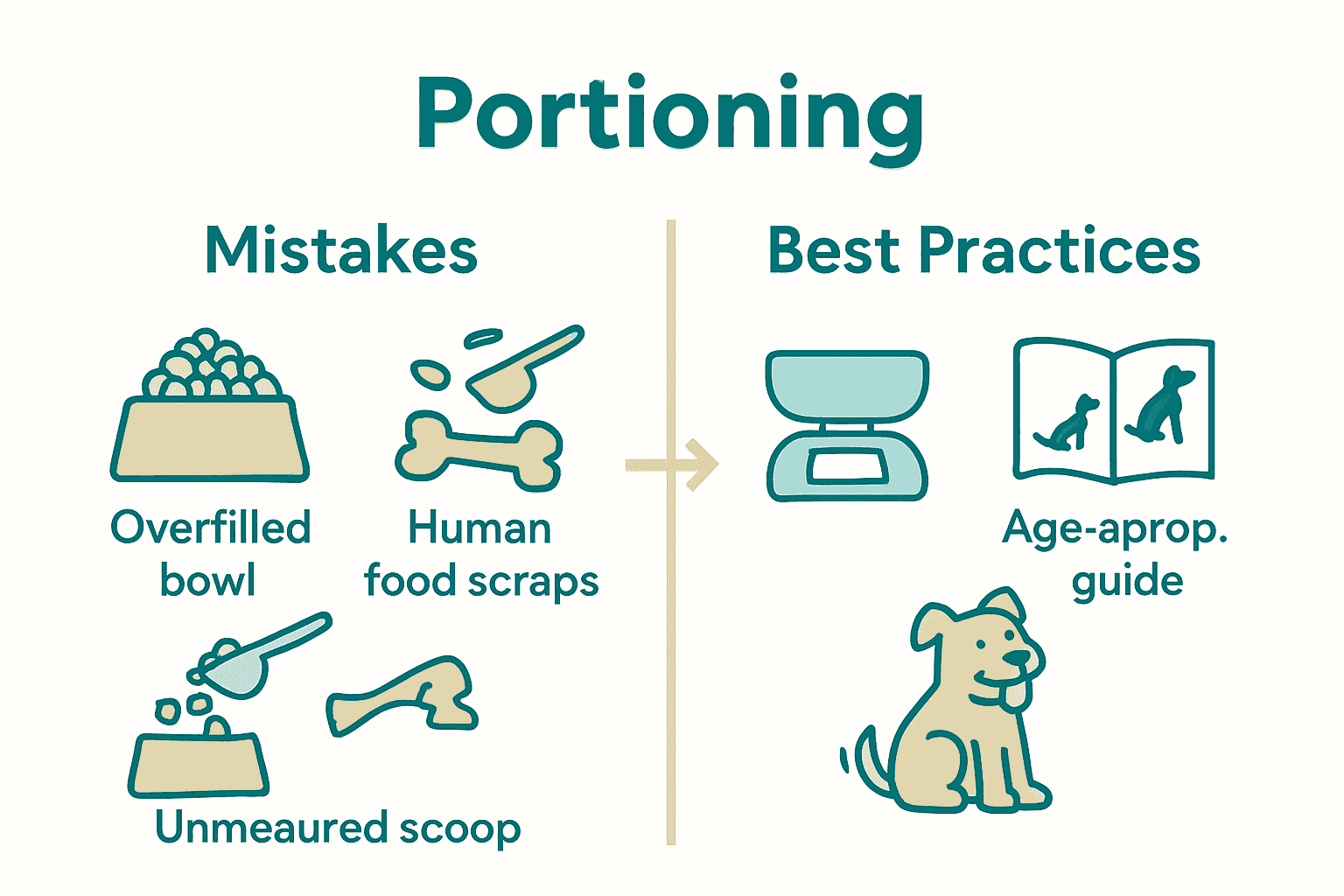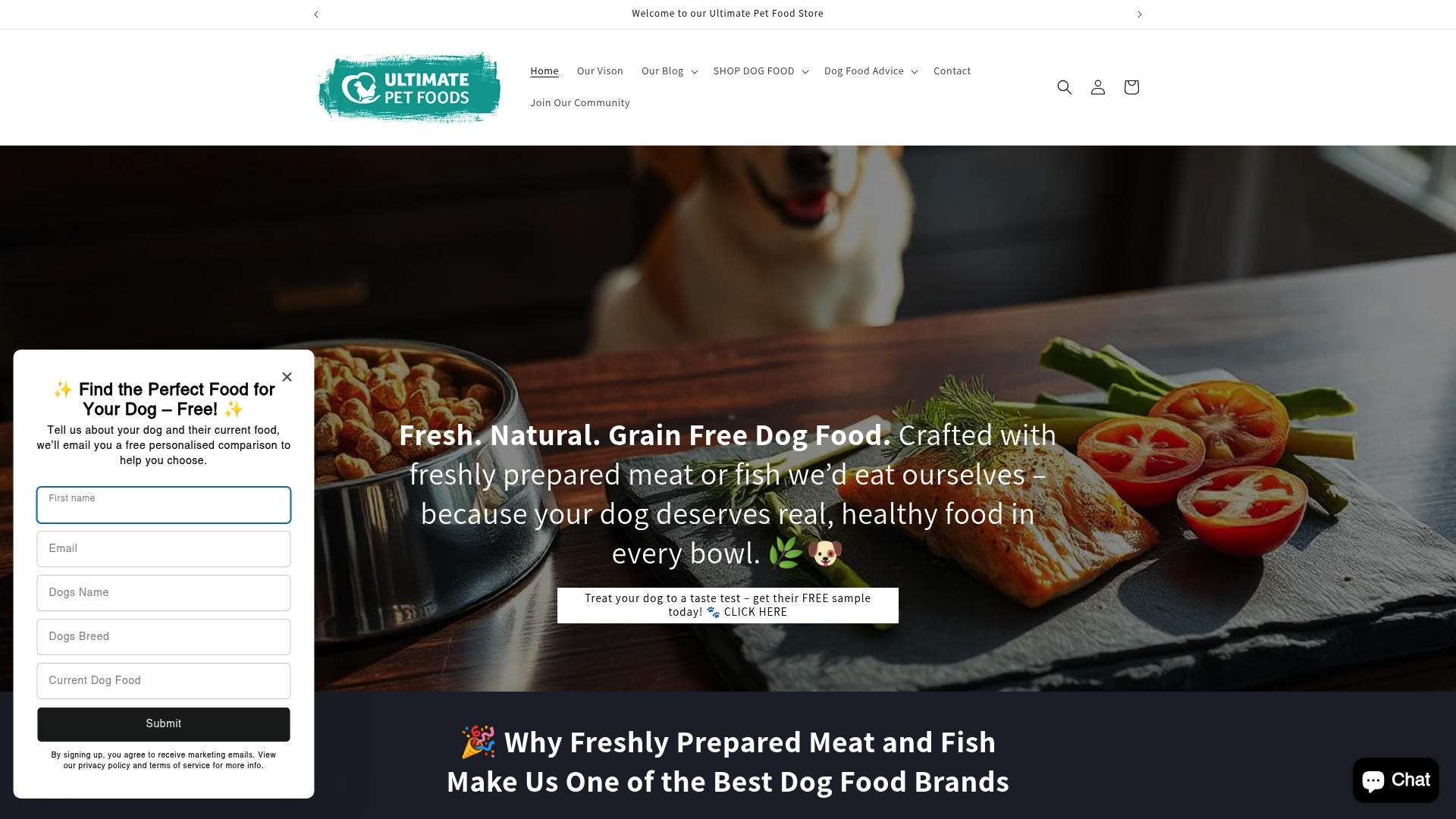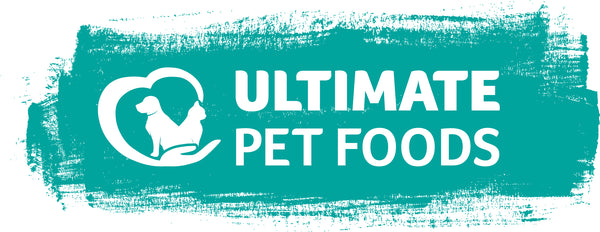
Dog Food Serving Sizes: Complete Owner's Guide
Share
Overfeeding is one of the biggest risks for british dogs, with experts estimating that over one third of household pets in the country are now overweight. Setting the right dog food serving sizes matters more than most owners realise, as each animal’s health depends on precise nutrition that fits their unique profile. Understanding what influences portion control helps british pet owners avoid common feeding mistakes and make confident choices for their canine companions.
Table of Contents
- What Are Dog Food Serving Sizes?
- Portion Size Differences By Breed And Age
- Factors Influencing Daily Food Portions
- Calculating And Measuring Exact Servings
- Common Mistakes And How To Avoid Them
Key Takeaways
| Point | Details |
|---|---|
| Feeding Guidelines Vary | Dog food serving sizes should be tailored to individual factors such as breed, weight, age, and activity level to maintain optimal health. |
| Measure Accurately | Using precise measurements, such as a digital scale, ensures your dog receives the correct portions for balanced nutrition. |
| Avoid Common Mistakes | Prevent overfeeding and poor nutritional choices by adhering to recommended serving sizes and avoiding inappropriate human food scraps. |
| Professional Recommendations | Aim to divide daily portions into two meals for adults, supporting steady energy levels and proper digestion. |
What Are Dog Food Serving Sizes?
Dog food serving sizes refer to the precise amount of nutrition recommended for your canine companion based on multiple critical factors. According to pdsa, dogs require specific portion control to maintain optimal health and prevent weight-related complications.
Serving sizes are not universal but instead depend on several nuanced variables. Serving size determinants include:
- Your dog’s body weight
- Age and life stage
- Breed characteristics
- Activity level
- Metabolic rate
- Overall health condition
As The Kennel Club emphasizes, these portions are crucial for preventing overfeeding, which can lead to significant health risks. Our freshly prepared kibble contains carefully measured nutritional profiles designed to support precise serving recommendations.
Professional veterinarians typically suggest dividing daily recommended portions into two meals for adult dogs. This approach helps maintain steady energy levels and supports optimal digestion. For those seeking more personalized guidance, our portion control guide offers comprehensive insights tailored to your dog’s unique nutritional requirements.
Portion Size Differences by Breed and Age
Dog nutrition is far from one-size-fits-all, with serving sizes dramatically varying across different breeds and life stages. The Kennel Club highlights a critical nuance: smaller dog breeds reach adulthood significantly earlier than larger breeds, which fundamentally impacts their dietary requirements.
Breed Size Nutritional Variations include:
- Small breeds (under 10kg): Mature around 8 months
- Medium breeds: Typical maturity around 12 months
- Large breeds (over 26kg): May take up to 24 months to fully mature
Animal Trust emphasizes that nutritional needs aren’t just about quantity, but also quality. Large and giant breed dogs require prolonged growth-specific diets, with carefully measured protein and calorie content to support healthy development.

Our freshly prepared kibble is scientifically formulated to address these nuanced nutritional demands. Each serving is precisely calibrated to support your dog’s specific breed characteristics, ensuring optimal nutrition through every life stage. For more detailed insights into age-specific nutrition, our life stage dog food guide provides comprehensive recommendations tailored to your dog’s unique needs.
Factors Influencing Daily Food Portions
Determining the right food portion for your dog involves a complex interplay of multiple critical factors. PDSA highlights that dog nutrition isn’t a simple calculation, but a nuanced approach considering several key variables that directly impact dietary requirements.
Primary Factors Affecting Food Portions include:
- Age and life stage
- Breed size and metabolic rate
- Activity level and exercise intensity
- Current body weight and condition
- Overall health status
- Specific medical conditions
Dogs Trust emphasizes the importance of life stage nutrition, noting that dietary needs change dramatically from puppyhood through senior years. Each transition requires careful nutritional recalibration to support optimal health and prevent potential weight-related complications.
Our freshly prepared kibble is meticulously formulated to address these nuanced nutritional demands. By providing precisely measured servings that adapt to your dog’s unique profile, we ensure balanced nutrition that supports their individual needs. For more comprehensive insights into tailoring your dog’s diet, our nutrition guide offers expert recommendations to help you make informed feeding decisions.
Calculating and Measuring Exact Servings
Precision matters when it comes to measuring your dog’s daily food portions. The Kennel Club emphasizes the critical importance of accurate measurement, recommending that dog owners use manufacturer feeding guides and carefully weigh out each serving to ensure optimal nutrition.
Key Steps for Precise Portion Control:
- Use a digital kitchen scale for exact measurements
- Follow manufacturer’s recommended serving size chart
- Adjust portions based on:
- Current body weight
- Activity level
- Metabolic rate
- Divide daily recommended amount into two meals
- Monitor your dog’s body condition regularly
UK Government guidelines highlight the significance of consistent feeding practices, recommending at least one meal per day with carefully documented food quantities. This approach ensures your dog receives precisely the nutrition they need.
Our freshly prepared kibble comes with a meticulously calibrated feeding guide, making portion control straightforward. Each serving is designed to provide balanced nutrition, with clear markings to help you measure accurately. For more detailed guidance on personalizing your dog’s diet, explore our nutrition portion guide to make informed feeding decisions tailored to your canine companion’s unique needs.
Common Mistakes and How to Avoid Them
Feeding your dog might seem straightforward, but numerous pitfalls can compromise their nutritional health. PDSA highlights the critical risks associated with incorrect feeding practices, emphasizing that many dog owners unknowingly make potentially harmful nutritional mistakes.
Common Feeding Mistakes to Avoid:
- Overfeeding and ignoring body condition
- Inconsistent portion control
- Feeding inappropriate human food scraps
- Neglecting age-specific nutritional needs
- Failing to adjust portions with changing activity levels
- Using outdated or incorrect feeding guidelines
- Treating too frequently without accounting for calorie intake
The Kennel Club warns specifically about the dangers of feeding human food scraps, which can lead to significant health complications including weight gain, dental issues, and potential illness. These seemingly harmless treats can dramatically disrupt your dog’s carefully balanced nutritional intake.

Our freshly prepared kibble is scientifically formulated to prevent these common nutritional errors. By providing precisely measured, nutrient-dense servings, we help dog owners navigate the complex landscape of canine nutrition. For comprehensive strategies to optimize your dog’s diet, explore our nutrition portion guide and ensure you’re making the most informed feeding decisions for your furry companion.
Achieve Perfect Portion Control with Tailored Nutrition from Ultimate Pet Foods
Feeding your dog the right amount with precise serving sizes is essential for their health and happiness. If you struggle with finding accurate portion sizes based on your dog’s breed, age, or activity level, you are not alone. The detailed guides and expert advice in the “Dog Food Serving Sizes: Complete Owner’s Guide” highlight common challenges like overfeeding and underfeeding that can lead to weight and health problems. You need a solution that supports balanced nutrition, helps avoid common feeding mistakes, and adjusts with your dog’s specific needs.

Explore our range of Dry Dog Food | Grain-Free & Science-Backed Kibble designed to deliver fresh, natural ingredients in perfect portions tailored to your dog’s life stage and breed size. From small breeds to larger dogs, our carefully formulated recipes make it easier to measure and control daily servings without the guesswork. Start now at Ultimate Pet Foods to provide your loyal companion with the precise nutrition they deserve and enjoy peace of mind knowing every meal supports their well-being. Browse our Small Breed Grain Free Dog Food | Freshly Prepared & Natural selection for expertly portioned options for smaller dogs and find the perfect match today.
Frequently Asked Questions
What factors should I consider when determining my dog’s food serving size?
When determining your dog’s food serving size, consider factors such as age, weight, breed, activity level, metabolic rate, and overall health condition. These elements are crucial in tailoring the portion to meet your dog’s specific nutritional needs.
How can I accurately measure my dog’s food portions?
To accurately measure your dog’s food portions, use a digital kitchen scale for precise measurements and follow the manufacturer’s feeding guidelines. Adjust portions based on your dog’s weight and activity level, and consider dividing the daily amount into two meals for better digestion.
Why is it important to follow age-specific feeding guidelines for dogs?
It’s important to follow age-specific feeding guidelines because a dog’s nutritional needs change as they age. Puppies require different nutrients than adult or senior dogs, and failing to adjust their diet can lead to health complications, obesity, or developmental issues.
What common mistakes should I avoid when feeding my dog?
Common mistakes to avoid include overfeeding, inconsistent portion sizes, feeding human food scraps, neglecting to adjust portions for activity levels, and using outdated feeding guidelines. These errors can negatively impact your dog’s health and wellbeing.
